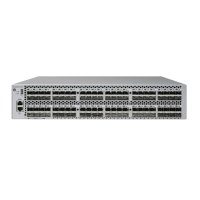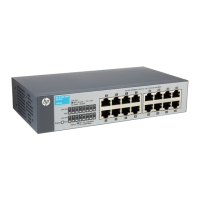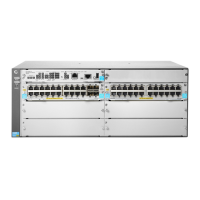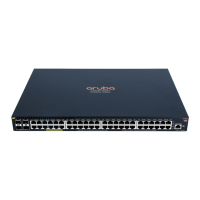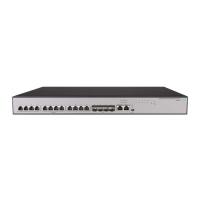95
Figure 23 Network diagram
Configuration procedure
# Enable Digest Snooping on GigabitEthernet 1/0/1 of Device A and enable global Digest Snooping
on Device A.
<DeviceA> system-view
[DeviceA] interface gigabitethernet 1/0/1
[DeviceA-GigabitEthernet1/0/1] stp config-digest-snooping
[DeviceA-GigabitEthernet1/0/1] quit
[DeviceA] stp global config-digest-snooping
# Enable Digest Snooping on GigabitEthernet 1/0/1 of Device B and enable global Digest Snooping
on Device B.
<DeviceB> system-view
[DeviceB] interface gigabitethernet 1/0/1
[DeviceB-GigabitEthernet1/0/1] stp config-digest-snooping
[DeviceB-GigabitEthernet1/0/1] quit
[DeviceB] stp global config-digest-snooping
Configuring No Agreement Check
In RSTP and MSTP, the following types of messages are used for rapid state transition on
designated ports:
• Proposal—Sent by designated ports to request rapid transition
• Agreement—Used to acknowledge rapid transition requests
Both RSTP and MSTP devices can perform rapid transition on a designated port only when the port
receives an agreement packet from the downstream device. RSTP and MSTP devices have the
following differences:
• For MSTP, the root port of the downstream device sends an agreement packet only after it
receives an agreement packet from the upstream device.
• For RSTP, the downstream device sends an agreement packet regardless of whether an
agreement packet from the upstream device is received.

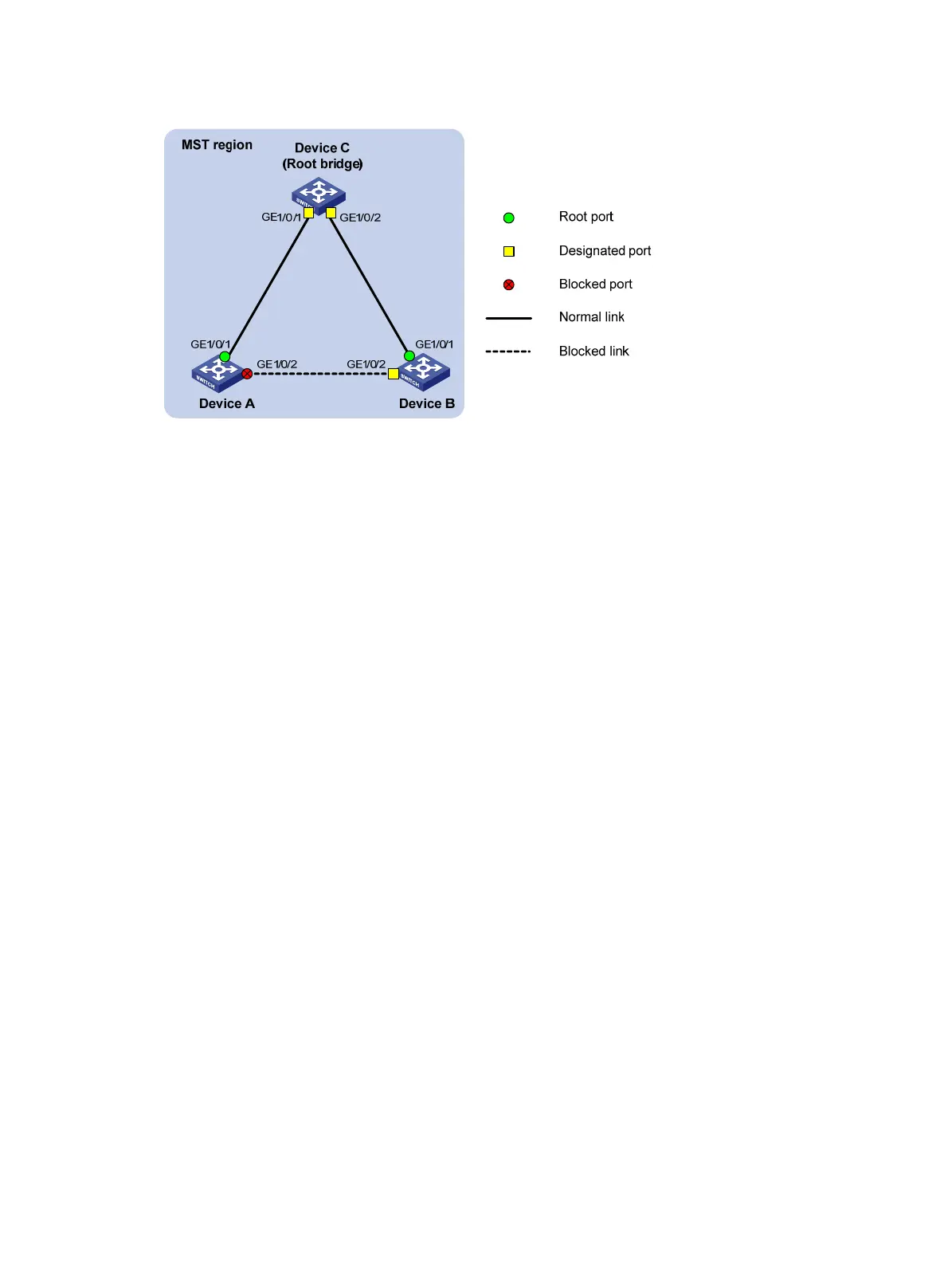